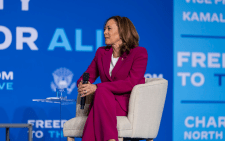As the world’s attention fixates on Israel’s war on Hamas and Hezbollah, a much older and equally devastating conflict rages on towards a grim milestone. The Russia-Ukraine war is approaching its 1,000th day, defying predictions and exposing Western powers’ costly miscalculations.
Reliable figures on casualties are hard to come by, but in September, The Wall Street Journal, citing intelligence and other unnamed sources, reported that about one million Ukrainians and Russians had been killed or wounded since the war began in early 2022.
When Russia invaded Ukraine, Western analysts confidently predicted a brief conflict, with some suggesting Moscow’s supplies would last only weeks before its military would retreat in shame.
Instead, the war grinds on, testing Western resolve and Ukrainian will. This miscalculation arose from the West’s tendency to underestimate Russia’s capabilities and determination, leading to costly decisions that have prolonged the conflict.
Look at the numbers. The United States alone has poured over $64 billion in military assistance into Ukraine, with the Joe Biden administration dipping into the emergency Presidential Drawdown Authority a remarkable 55 times since August 2021 to access Department of Defence weapons stockpiles to arm Kyiv.
Recent military aid packages included sophisticated air defence systems and artillery munitions. European allies have contributed tanks and aircraft. But despite these massive investments, Ukraine’s position remains precarious. Russian drones still strike the capital Kyiv with regularity, and missiles target several other regions of Ukraine, with civilian casualties inevitably mounting.
Ukraine President Volodymyr Zelenskyy is desperate. During his tour of European capitals in early October, he promoted what he called a “victory plan”. But it is a plan with foreign support as its main thrust – without substantial Western backing, a win remains elusive. His increasing direct criticism of Western allies’ “inaction” and demands for more support highlight a growing frustration.
Zelenskyy has the audacity to push the envelope on aid because he knows the West has the resources to do more and has an interest in seeing Ukraine win and Russia’s Vladimir Putin humiliated. Even more important is domestic pressure: Ukrainians are fatigued by the war and want a way out.
Ukraine said in recent days that its troops had clashed with North Korean soldiers backing Russia “near the frontline”. Previously, Zelenskyy directly criticised the West’s “zero” response to the deployment of Pyongyang’s soldiers, underlining the widening gulf between Ukrainian expectations and Western commitments.
This gap is illustrated in another important way. While Zelenskyy wants to use Western-supplied weapons to strike deep inside Russia, US and European leaders are worried this could potentially draw NATO into direct confrontation with Russia and widen the conflict.
As these debates and disagreements persist, so does the war. The economic implications of the conflict for Ukraine are sobering. The World Bank estimated in 2023 that the war had pushed more than seven million people into poverty and reversed 15 years of economic development.
Although it’s naïve to look beyond a seemingly never-ending war, wars don’t drag on forever and when this one does end – and Donald Trump’s retaking of the White House could accelerate this – the work of rebuilding Ukraine will have to begin.
One group estimated that at the end of 2023, Ukraine needed 453 billion euros for reconstruction and recovery. This did not include the cost of resettling over three million people displaced internally and about six million more scattered in Europe and other parts of the world.
Reconstruction work will take a decade or more, experts have said. This will be a major challenge. Because of the war, Ukraine’s GDP declined by about 30 per cent in 2022. While it grew in the low single digits in 2023 and this year, this was not driven by greater production but by budget support, recovery assistance and humanitarian aid.
Ukraine’s economy is unlikely to return to its prewar position until about 2030, per the IMF. Some of the entities that are likely to benefit from reconstruction contracts will be the countries that have bankrolled the disastrous war and they are waiting in the wings to pounce when the right time comes. These are the outcomes of the choices the world’s dominant powers make.
— The writer is a Sub-Editor with People Daily-


